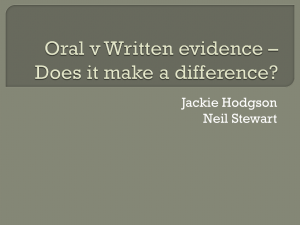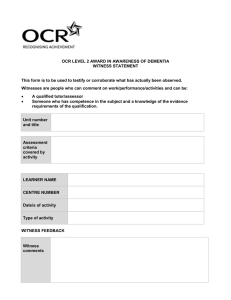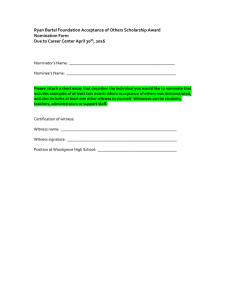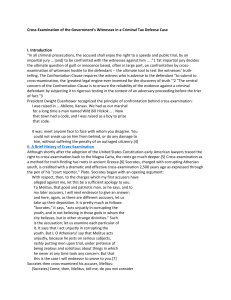PURPOSE OF THE MOCK TRIAL Helpful Hints for Mock Trial Participants
advertisement
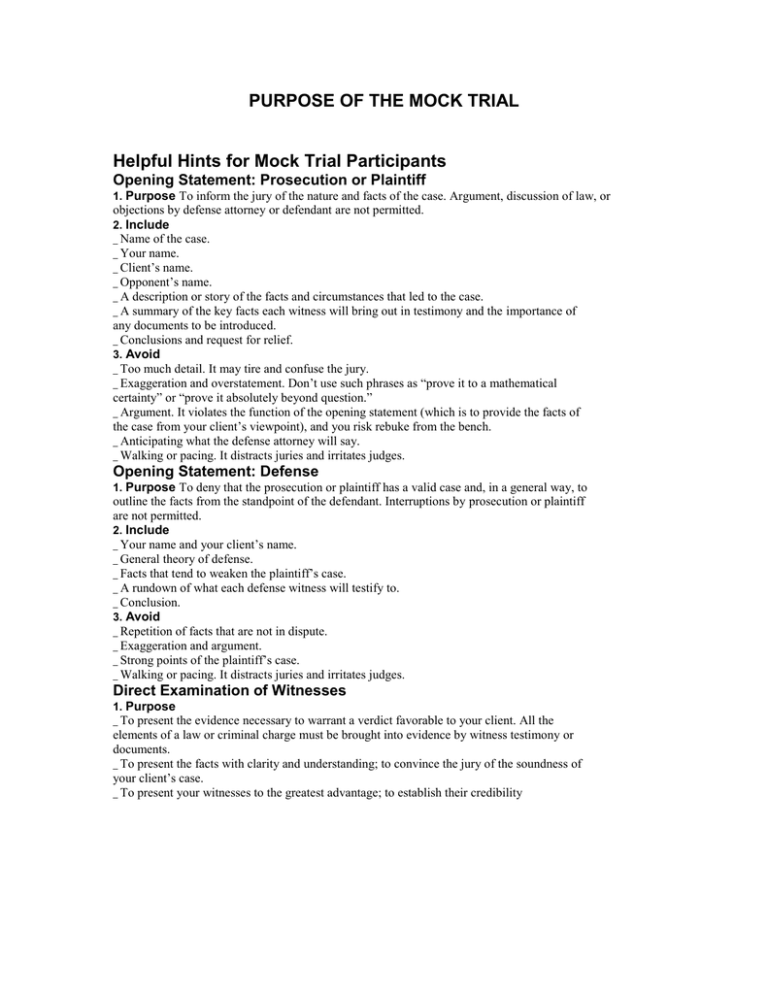
PURPOSE OF THE MOCK TRIAL Helpful Hints for Mock Trial Participants Opening Statement: Prosecution or Plaintiff 1. Purpose To inform the jury of the nature and facts of the case. Argument, discussion of law, or objections by defense attorney or defendant are not permitted. 2. Include _ Name of the case. _ Your name. _ Client’s name. _ Opponent’s name. _ A description or story of the facts and circumstances that led to the case. _ A summary of the key facts each witness will bring out in testimony and the importance of any documents to be introduced. _ Conclusions and request for relief. 3. Avoid _ Too much detail. It may tire and confuse the jury. _ Exaggeration and overstatement. Don’t use such phrases as “prove it to a mathematical certainty” or “prove it absolutely beyond question.” _ Argument. It violates the function of the opening statement (which is to provide the facts of the case from your client’s viewpoint), and you risk rebuke from the bench. _ Anticipating what the defense attorney will say. _ Walking or pacing. It distracts juries and irritates judges. Opening Statement: Defense 1. Purpose To deny that the prosecution or plaintiff has a valid case and, in a general way, to outline the facts from the standpoint of the defendant. Interruptions by prosecution or plaintiff are not permitted. 2. Include _ Your name and your client’s name. _ General theory of defense. _ Facts that tend to weaken the plaintiff’s case. _ A rundown of what each defense witness will testify to. _ Conclusion. 3. Avoid _ Repetition of facts that are not in dispute. _ Exaggeration and argument. _ Strong points of the plaintiff’s case. _ Walking or pacing. It distracts juries and irritates judges. Direct Examination of Witnesses 1. Purpose _ To present the evidence necessary to warrant a verdict favorable to your client. All the elements of a law or criminal charge must be brought into evidence by witness testimony or documents. _ To present the facts with clarity and understanding; to convince the jury of the soundness of your client’s case. _ To present your witnesses to the greatest advantage; to establish their credibility 2. Refreshing memory In the event that your witness’s memory fails, you may refresh his or her memory by the use of the witness statement. 3. General suggestions _ Ask “open-ended” questions. Those usually begin with who, what, when, where, or how, or by asking the witness to “explain” or “describe.” _ Avoid complex or long-winded questions—questions should be clear and simple. _ Be a “friendly guide” for the witnesses as they tell their stories. Let the witnesses be the stars. _ Be prepared to gather information via questions and answers. Narratives, though very effective, may be open to objections. Cross-Examination of Witnesses 1. Purpose _ To secure admissions from opposing witnesses that will tend to prove your case. negate your opponent’s case by discrediting his/her witnesses. 2. Scope _ Witnesses may be cross-examined regarding their direct testimony. Cross-examination is used to explain, modify, or discredit what a witness has previously stated. 3. Approach _ Use narrow, leading questions that suggest an answer to the witness. Ask questions that require “yes” or “no” answers. _ Expose lack of sincerity or the existence of bias. _ Never ask “Why?” It gives a well-prepared witness a chance to explain. _ Generally, don’t ask questions unless you know what kind of answer you are going to obtain. Fishing trips may be expensive. _ Be fair, courteous; avoid the “Isn’t it a fact…?” type of questioning. _ It may be useful not to insist on an answer. _ To Closing Argument _ Summarize the highlights of the testimony and documents as they support your case and undermine your opponent’s case. Use actual examples from the trial that you have written down. _ Tie the facts to the law. Be persuasive. _ Confidently request the judge or jury to grant you the decision that you want. Source: Adapted with permission from the Mock Trial Manual of the Law, Youth & Citizenship Program of the New York State Bar Association, www.nysba.org.
